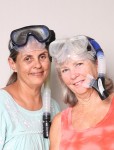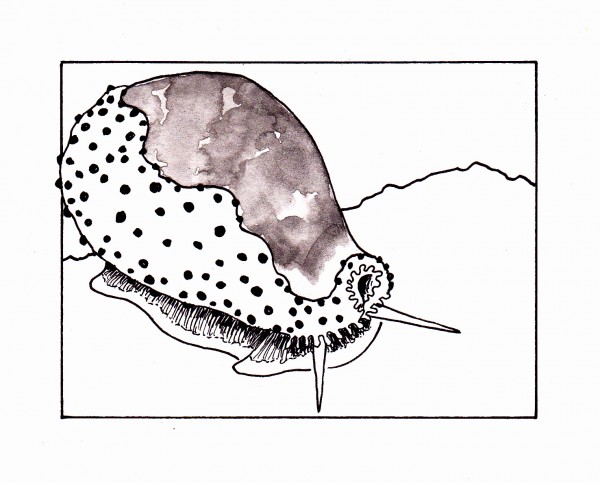California’s Ornamental Cowrie

Cowrie shells have been prized by many cultures throughout the world. They have been worn as jewelry, used as amulets, and served many decorative purposes. Native Americans traded them. In China and Africa, they have been used as currency. In fact, porcelain china is named after the Italian word porcellana which means cowrie shell in Italian. The only cowrie found in California is the chestnut cowrie (Neobernaya spadicea or Zonaria spadicea, formerly Cypraea spadicea). Distributed between Monterey, California and Baja California, although more common south of Santa Barbara, the chestnut cowrie is a marine gastropod (snail) that inhabits the subtidal zone up to 165 feet deep. It is found on rocks in sheltered areas such as channels, under ledges and in crevices often hidden in seaweed and surfgrass.
The chestnut cowrie has an oval shell with one end narrower than the other and is typically 2.5 inches in length. The top of the shell is colored in shades of chestnut brown surrounded with a dark brown band edged in white. The underside of the shell is white with a longitudinal serrated slit from which the animal emerges. Due to the polishing action of two retractable blue spotted orange mantles which cover the shell when the animal is unstressed, the shell is smooth and has a high sheen. The muscular foot (body) is soft and light colored and used to glide across the substrate.

Scavengers and omnivores, the cowrie feeds at night on anemones, sponges, tunicates, carrion, and the eggs of marine snails. Predators include the California two-spot octopus and the Sheephead. The chestnut cowrie is either male or female and the eggs are fertilized internally. Mating in July, several hundred eggs are laid on the rocks in clusters. The parents guard the eggs until they hatch in about three weeks. The larvae are planktonic and drift in the current before settling on a reef and developing adult characteristics.
Although chestnut cowries can occasionally be found in a tidepool, they are generally located in deeper waters on the protected rocks. When a shell is washed up on the beach, it tends to be worn, dull and missing color from being scoured by wave action and sand. Laguna Locals from the 1950’s recall that chestnut cowries were the first local ocean species to be protected back then, long before Laguna Beach became a State Marine Reserve. There is absolutely no collecting of marine life or shells in the Reserve.
Mia Davidson and artist Jan Sattler are long-time Laguna residents and year round ocean swimmers who believe that educating the public about the marine environment will contribute to preservation of the habitat and its organisms.




